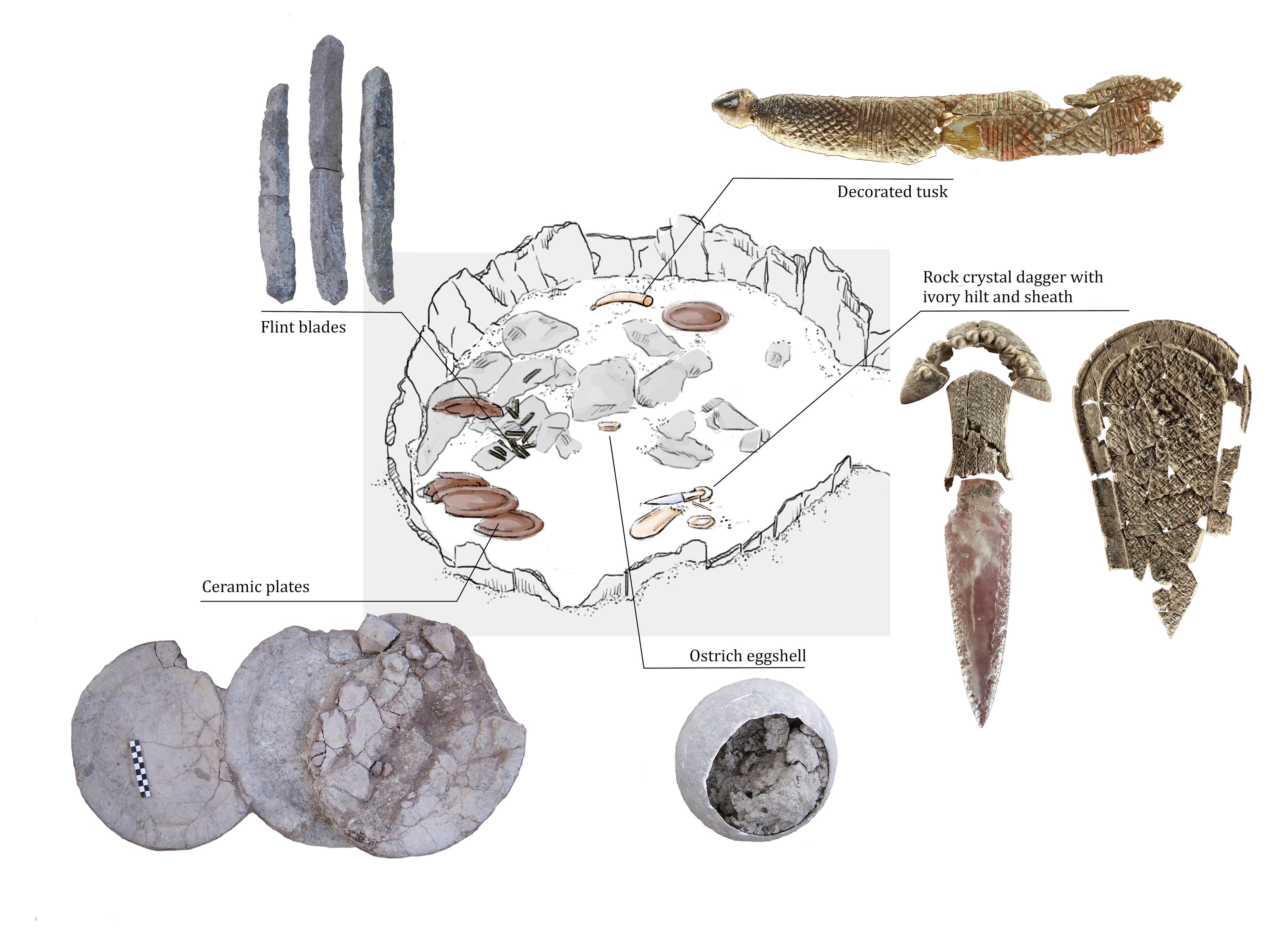A fresh analysis of a high-status skeleton discovered in an ancient tomb in modern-day Spain has revealed that the individual was not a male, as previously assumed, but a female.
The tomb was first discovered in 2008 near Valencina, a small town just west of Seville in Spain. Along with a skeleton, early excavations revealed the tomb was lavishly adorned with an array of beautiful artifacts dating to the Copper Age between 3200 and 2200 BCE, including ivory tusks, high-quality flint, ostrich eggshell, amber, and a rock crystal dagger.
Clearly, the owner of the tomb was a big deal. While the body was initially assumed to be a young male of high status, a team of archeologists at the University of Seville started to suspect that, in fact, the individual was a female. To dig deeper into their hunch, they used a technique called amelogenin peptide analysis on the skeleton’s teeth.
This technique can determine a skeleton’s sex by looking for the enamel-forming protein amelogenin. In males, the protein is coded for by the AMELY gene found in the Y chromosome, which only males have (XY). In females, amelogenin is produced thanks to the AMELX gene on the X chromosome, which females have two of (XX).
Analysis of a molar and an incisor detected the presence of the AMELX gene, indicating that the individual was female rather than male.
In light of their discovery, the team has renamed the individual the “Ivory Lady.”
Intriguingly, it doesn’t look like this elite individual was simply born into a position of power. By looking at the state of other graves in the area, the researchers believe they gained a prominent social position through their own merit and personal achievement.
“In the case of Valencina site, the lack of grave goods in infant burials suggests that, in this period, individuals were not granted high status by birth,” Leonardo García Sanjuán, study author and professor of prehistory at the University of Seville, told IFLScience.
“There are several grounds to claim that the Ivory Lady was a very prominent and famous person at her time. Firstly, the architecture and location of her grave. She was buried in a megalithic tomb which subsequently, and for a period of between 200 and 250 years, became the focus of intense burial and ritual activity, including more than 60 smaller tombs and many deposits in pits,” continued Sanjuán.
“Secondly, there is the fact that some two to three generations after she was buried, when the magnificent Montelirio tholos was built some 80 meters to the south, a fresh set of grave goods, including some spectacular artifacts, like the dagger with a rock-crystal blade and ivory hilt, was made on top of her grave,” he added.

A collection of the relics found in the tomb of the Ivory Lady.
Image Credit: Miriam Lucianez Trivino.
It’s often assumed that all ancient civilizations held brutish hierarchies forged by tough guys and testosterone. However, it often appears that things were a lot more nuanced in the distant past than you might first think. It is also important to mention that views of sex, gender, and social roles have fluidly changed over time, varying massively from society to society. They are far from set in stone.
From Viking remains in Northern Europe to the ancient Maya of South America, a number of archeological discoveries have shown that females would often become warriors in certain ancient cultures, while others might push themselves to the top of the social hierarchy.
“In the ethnographic literature, the leaders of the pre-state societies are, in most cases, male individuals and concepts such as ‘big man’, ‘chiefdoms’ or ‘aggrandizers’ are used to describe these societies. Our study shows that this was not necessarily the case in Copper Age in Iberia Peninsula and that females may have also occupied high offices as leaders among pre-state societies, which renders women relevant in the analysis of social complexity,” Sanjuán explained to IFLScience.
Through their latest study on the Ivory Lady, the researchers hope they have demonstrated how amelogenin peptide analysis could prove to be an invaluable tool to illuminate the complexity of sex and society in ancient history.
“It is likely that, once its use becomes widespread, amelogenin peptide analysis will help rectify the sexual identification of difficult or doubtful cases, and establish firm diagnostics for individuals who were deemed ‘undetermined’ after physical anthropological analysis. This is likely to have an impact on the study of Bronze Age and Iron Age societies,” he concluded.
The new study is published in the journal Scientific Reports.
Source Link: Once Assumed To Be Male, This Ancient Leader Was Actually The "Ivory Lady"